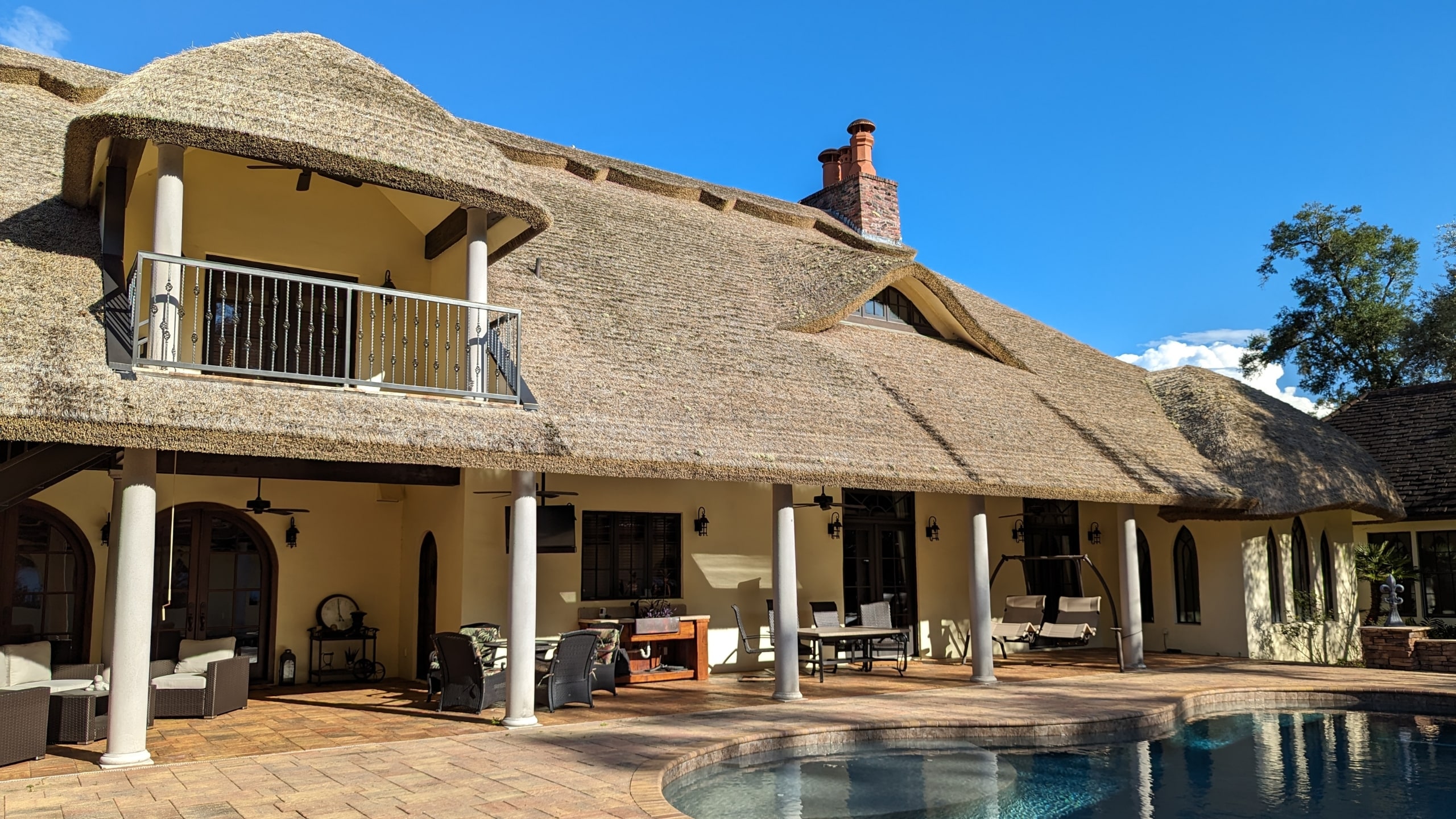
Thatch Roofing Myths Debunked: The Truth About Engineered Thatch Durability
You’ve probably heard of thatch roofing: it’s been a staple of building and home roofing materials for thousands of years! As popular and effective as it may be, engineered thatch has taken its durability and practicality into the modern age.
There are still some stigmas around thatch roofing, such as its low durability, yet they’re no longer true with the advent of engineered thatch. In this article, we’re here to set the record straight. Here are the most common thatch roofing myths debunked.
What is Engineered Thatch?
Let’s take a step back into history to understand our engineered thatch best. In both tropical and temperate climates, thousands of years ago and even today, thatch is a roofing method used for simplicity and effectiveness. Thatching incorporates local vegetation such as straw, water reed, rushes, palm branches, and heather into a layered, densely-packed construction that acts as insulation and a barrier to the outside weather. It can withstand rain, hail, snow, and wind and retains heat well.
Engineered thatch retains the same beautiful, natural design of thatch without any of the downsides. Endureed’s thatch roofing is made of 100% recyclable materials guaranteed to be durable in intense weather. It comprises proprietary polyvinyl chloride (PVC) and high-density polyethylene (HDPE) blends – the same strong materials used in bulletproof vests, cutting boards, and building siding. Working together, these two materials make incredibly resilient materials while keeping the beauty of natural thatch – take a look at our Cape Town, Kilimanjaro, Somerset, Kona, and Bali thatch designs to see the elegance inspired by cultures worldwide.
The Most Common Misconceptions
Many misconceptions about our engineered thatch primarily come from the downsides of the original, natural type. We’re happy to set the story straight.
1. Engineered Thatch is Flammable
Engineered thatch is NOT flammable. It has been rated as a Class A Fire-Resistant Material. Any building materials with a Class A fire rating provide the most outstanding fire resistance possible; they can also withstand fire caused by ordinary combustible items such as wood, cloth, paper, and trash.
The fire resistance rating is the length of time a specific material can withstand a particular fire test. It is usually determined by measuring the ability of a fire protection material or assembly to hold out against a normal fire. We are happy to confirm that Endureed’s engineered thatch is indeed class A fire resistant, so you can rest assured that you’re selecting the safest roofing material possible.
2. Engineered Thatch is Not Durable
It is commonly assumed that engineered thatch is not durable, likely due to the fragile nature of traditional thatch. Engineered thatch, however, is among the most durable roofing materials. It requires no maintenance, withstands all types of weather (rain, hail, snow, wind), and is guaranteed to last with a 20-year warranty.
3. Engineered Thatch is Hard to Clean
Unlike natural fibers such as grass and palm leaves found in traditional thatch, engineered thatch is made with a patented formula that protects it from rotting and decay. Furthermore, its waterproof design enables it to be cleaned thoroughly as much as required.
4. Engineered Thatch Cannot Withstand Hurricane Winds
Endureed thatch roofing has a wind rating of up to 200 mph. That’s strong enough to withstand category 5 hurricane winds and has proven to survive in tornadoes of equal strength. All of our products are Florida Product Approved, which happens to be in one of the strictest building codes in the world.
5. Engineered Thatch Doesn’t Look Like the Real Thing
Our engineered thatch is designed to look indistinguishable from traditional thatch. What’s more, we’ve designed different styles of thatch to match the aesthetic of locations around the world where thatch became a staple of architecture. From the sandy islands of Hawaii to the windy heathlands of England, our engineered thatch roofing has the beauty to match your dream property.
6. Engineered Thatch is Insect-Prone
Traditional thatch is, unfortunately, prone to rot and decay along with infestations of insects and pests such as snakes, bats, birds, and bugs. No pesticide sprays are needed!
7. Engineered Thatch is Not Modern
Thatch has indeed been a roofing material used throughout human history, but it remains a beautifully unique aesthetic choice. Hundreds of the biggest names in resorts and hotels, such as Four Seasons, SeaWorld, Hard Rock Cafe, and Iberostar, have trusted it. Look at our testimonials to see how excited thriving, modern businesses have been to use Endureed! Whether your project is residential or commercial, engineered thatch is a stylish and practical choice.
The Bottom Line: You Can Count on Engineered Thatch Durability
Traditional thatch using natural grasses and leaves has understandably earned a reputation for low durability, but this couldn’t be farther from the truth with Endureed’s engineered thatch. Gaining popularity for its high durability, longevity, and beautiful appearance, engineered thatch is the solution for your property.
Engineered thatch is redefining the future of quality roofing materials: from small gazebos to sprawling seaside resorts, the full product line of Endureed will surely match your needs with a sleek, long-lasting roof. Contact our team of experts today to match your dream property with the roofing material it needs to thrive!